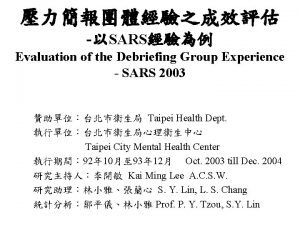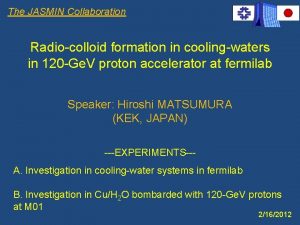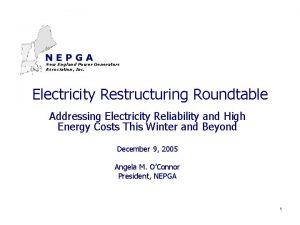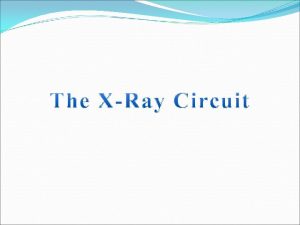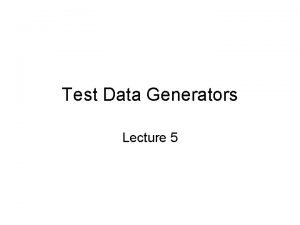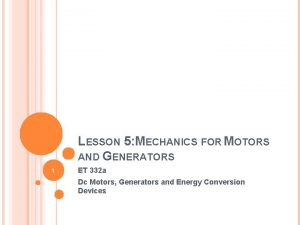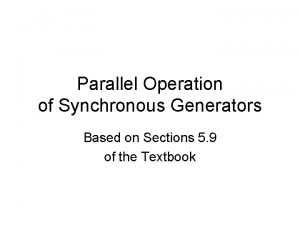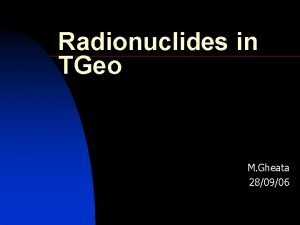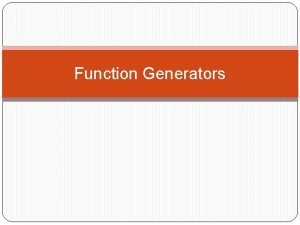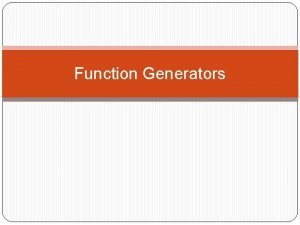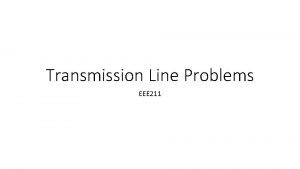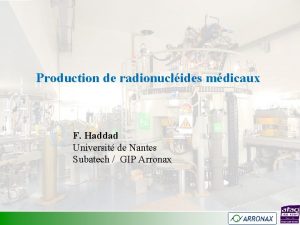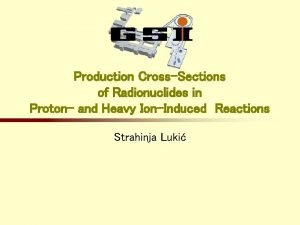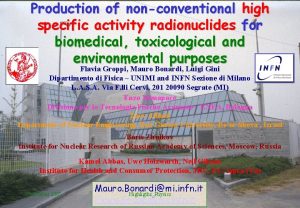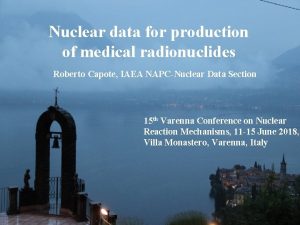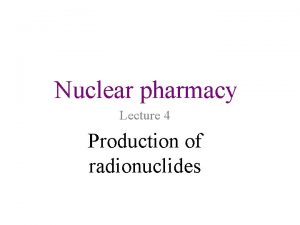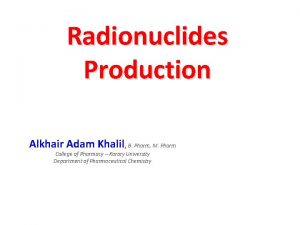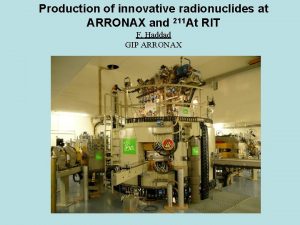Radionuclides production cont Generators Generators Where clinical tests














- Slides: 14

. Radionuclides production cont Generators

Generators ● Where clinical tests require that a radioisotope be administered internally, it is advantageous to use an isotope with a short halflife to minimize the radiation dose received by the patient. ● Larger dose of short-lived radionuclides can be administered to the patient with only minimal radiation dose and excellent image quality. ● The short-lived radionuclides cannot be shipped to the distant places because of their rapid decay.

Generators are developed to serve as convenient sources of the production of short-lived radionuclides. ● A generator is constructed on the principle of the decay-growth relationship between a long-lived parent radionuclide and its short-lived daughter radionuclide. ● In a generator, basically a long-lived parent nuclide is allowed to decay to its short-lived daughter nuclide and the latter is then chemically separated.

The importance of radionuclide generators lies in the fact that they are easily transportable and serve as sources of shortlived radionuclides in institutions far from the site of any cyclotron or reactor facility. ● Generators are either ion exchange resins or alumina columns which contain a parent radionuclide. ● With time the parent radionuclide decays to a daughter radionuclide that is not adsorbed on the column.

Radionuclide generator ● It consists of a glass or plastic column fitted at the bottom with a fritted disk. ● The column is filled with adsorbent material such as cation- or anion -exchange resin, alumina and zirconia, on which the parent nuclide is adsorbed. ● The daughter radionuclide grows as a result of the decay of the parent. ● Because there are differences in chemical properties, the daughter activity is eluted in a carrier-free state with an appropriate solvent, leaving the parent on the column.

● After elution, the daughter activity starts to grow again in the column until a equilibrium is reached.

● A radionuclide generator must be sterile and pyrogen free. ● The generator system may be sterilized either by autoclaving the entire column or by preparing it from sterile materials under aseptic conditions. ● Often bacteriostatic agents are added to the generator column. Elution or milking of the generator must be carried out under aseptic conditions.

An ideal radionuclide generator should be simple, convenient and rapid to use, and give a high yield of the daughter nuclide repeatedly and reproducibly. ● It should be properly shielded to minimize radiation exposure, and sturdy and compact for shipping. ● The generator eluate must be free from the parent radionuclide and adsorbed material.

The important generators in nuclear medicine are: 99 Mo-99 m. Tc 87 Y-87 m. Sr Generator Important Radionuclide Generators: 99 Mo-99 m. Tc Generator The 99 Mo radionuclide has a half-life of 67 hr and decays by βemission, to 99 m. Tc. The radionuclide 99 m. Tc has a half-life of 6 hr and decays to ground state 99 Tc (2. 1 × 105) by isomeric transition.

Construction



Radioisotope parent-daughter generator systems Parent isotope Half-life Daughter isotope Half-life Application 99 Mo 67 hr 99 m. Tc 6 hr Imaging of organs 132 Te 3. 2 days 132 I 2. 3 hr Thyroid scanning

 Cont or cont'd
Cont or cont'd Cont or cont'd
Cont or cont'd Radionuclides
Radionuclides Post production adalah
Post production adalah Ace different tests help iq but
Ace different tests help iq but New england power generators association
New england power generators association What is a falling load generator
What is a falling load generator Trane generators
Trane generators Test data generators
Test data generators Difference between generator and manifesting generator
Difference between generator and manifesting generator Gentrack generators
Gentrack generators Lesson 5: introduction to generators
Lesson 5: introduction to generators Parallel operation of generators
Parallel operation of generators [email protected]
[email protected] Yield vs return python
Yield vs return python
